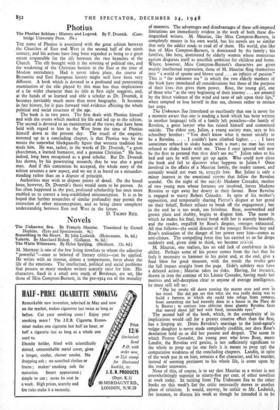Photius
The Photian Schism : History and Legend. By F. Dvornik. (Cam- bridge University Press. 35s.)
THE name of Photius is associated with the great schism between the Churches of East and. West in the second half of the ninth century, and his actions have long been regarded as being to a great extent responsible for the rift between the two branches of the Church. The rift brought with it the severing of political ties, and the weakening of the Christian bastion in the East at the time of Moslem ascendancy. Had it never taken place, the course of Byzantine and East European history might well have been very different. A book which is devoted to a profound and penetrating examination of the role played by this man has thus implications of a far wider character than its title at first sight suggests, and, at the hands of so learned and able a scholar as Dr. Dvornik, it becomes inevitably much more than mere biography. It becomes in fact history, for it puts forward vital evidence affecting the whole political and social structure of the age.
The book is in two parts. The first deals with Photius himself and with the events which marked his life and led up to the schism. The second is devoted to an examination of the views that have been held with regard to him in the West from the time of Photius himself down to the present day. The result of the enquiry, summed up in a concluding chapter, is that Photius was by no means the somewhat blackguardly figure that western tradition has made him. He was, rather, in the words of Dr. Dvornik, " a great churchman, a learned humanist, and a genuine Christian." He has, indeed, long been recognised as a good scholar. But Dr. Dvornik has shown, by his penetrating research, that he was also a good man. And if this contention be accepted, the whole story of the schism assumes a new aspect, and we see it as based on a misunder- standing rather than on a dispute of principle.
Authorities may wish to dispute points of detail. On the broad fssue, however, Dr. Dvornik's thesis would seem to be proven. As has often happened in the past, profound scholarship has once more enabled us to correct a long-established misconception. It is to be hoped that further researches of similar profundity may permit the correction of other misconceptions, and so bring closer completer understanding between East and West in the future.
D. TALBOT RICE.


































 Previous page
Previous page